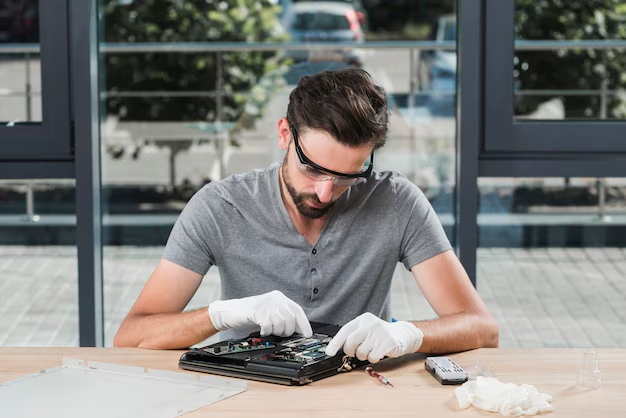Why Is My Refrigerator Not Cooling? Uncovering the Causes and Solutions
When you open your refrigerator, you expect a blast of cold air to greet you. But what happens when you find your food lukewarm and your ice cream melting? A refrigerator that’s not getting cold is more than just an inconvenience—it's a problem that needs addressing quickly to prevent food spoilage. In this guide, we will explore why your refrigerator may not be cooling properly, and offer practical insights to diagnose and resolve the issue effectively. Let's dive into the world of chill troubleshooting!
Understanding the Basics of Refrigerator Cooling
Before diving into potential issues, it's essential to understand the basic process of how refrigerators cool your food. Essentially, a refrigerator is a sophisticated piece of machinery that uses a system of coils, a compressor, and a refrigerant to remove heat from the interior.
- Compressor: The compressor pumps refrigerant through the system, increasing pressure and moving it through the refrigerator's coils.
- Evaporator Coils: Located inside the freezer, these coils absorb heat, cooling the air in the compartment.
- Condenser Coils: Positioned at the back or under the fridge, condenser coils release absorbed heat.
- Refrigerant: This chemical is essential for transferring heat from the inside to the outside of the refrigerator.
Understanding these components can help diagnose issues when the fridge isn't working as expected.
Common Causes for a Refrigerator Not Cooling
If your refrigerator isn't cooling, there are several common culprits you might examine:
1. Power Supply Issues
It's easy to overlook power issues, but sometimes it’s worth checking the basics.
- Ensure the Fridge is Plugged In: Verify that the refrigerator is securely plugged into the electrical outlet.
- Circuit Breaker: Check whether the circuit breaker has tripped.
2. Faulty Temperature Settings
Refrigerators have adjustable settings, and it's possible they’ve been disturbed.
- Temperature Dial: Confirm that the temperature setting hasn't been accidentally adjusted.
- Digital Settings: If your fridge has a digital control panel, ensure it's set to your desired temperature.
3. Obstructed Airflow
Proper airflow is crucial for maintaining cool temperatures.
- Blocked Vents: Food items can obstruct air vents inside the fridge or freezer, blocking airflow.
- Overloading: Overloading a fridge can impede air circulation.
4. Condenser Coil Issues
The condenser coils expel heat from the fridge and can be a major source of problems.
- Dirty Coils: These coils need to be clean to work efficiently. Dust and dirt accumulation can hinder their function.
- Placement: Ensure the refrigerator has adequate space from the wall for proper ventilation.
5. Malfunctioning Thermostat
The thermostat regulates the temperature. If it's not functioning, the fridge won't cool effectively.
- Testing the Thermostat: A professional can determine if the thermostat is the cause of the issue.
6. Compressor Problems
The compressor is the heart of the cooling mechanism.
- Compressor Failure: If this component fails, the refrigerator will not cool.
- Noisy Compressor: Excess noise could indicate a failing compressor.
7. Damaged Door Gaskets
The gasket seals the door to the refrigerator, keeping the cold air in and warm air out.
- Check for Damage: Look for wear and tear or gaps in the door seal.
- Gasket Flexibility: It should be flexible enough to create a tight seal.
8. Refrigerant Leaks
Refrigerant is crucial for cooling. A leak can severely impact the refrigerator's ability to maintain cool temperatures.
- Professional Inspection: A refrigerant leak requires professional repair.
Practical Troubleshooting Tips
If your refrigerator isn't getting cold, here are some practical steps you can take at home:
🔍 Check Basic Settings and Conditions
- 📝 Inspect Power Supply: Ensure that the refrigerator is plugged in and the circuit breaker hasn’t tripped.
- 📊 Verify Temperature Settings: Adjust the thermostat to the correct setting.
🧹 Maintaining Airflow and Cleanliness
- 🔄 Clear Vents: Ensure vents in the fridge and freezer aren’t blocked by large food items.
- 🔧 Clean Coils: Use a vacuum or brush to clean the condenser coils every six months.
🛠️ Perform Basic Maintenance
- 🧪 Test Door Seals: Use the dollar bill test—close the door on a bill and see if it slips out easily, indicating a poor seal.
- ❄️ Defrost the Freezer: If ice build-up is present, manually defrost your freezer.
📞 When to Call a Professional
If troubleshooting at home doesn't solve the problem, or if you suspect issues with the compressor, thermostat, or refrigerant, it's best to contact a professional.
Avoidable Missteps That Could Lead to Cooling Issues
- Ignoring Regular Maintenance: Regular maintenance helps prevent issues from developing. Keep coils clean and ensure vents are clear.
- Overstocking the Refrigerator: Avoid overloading shelves, which can restrict airflow and hamper cooling.
Summary of Key Takeaways
Here's a convenient checklist to ensure your refrigerator operates efficiently:
- 🔌 Confirm Power Supply: Ensure it is plugged in and the circuit is active.
- ❄️ Monitor Temperature Settings: Maintain correct settings.
- 🔄 Clear Obstructions: Keep vents unblocked.
- 🧹 Clean Condenser Coils: Do this every six months.
- 🧪 Test Door Gaskets: Replace if damaged.
- 📞 Seek Professional Help: Especially for complex issues like compressor problems or refrigerant leaks.
A malfunctioning refrigerator can cause significant inconvenience, but by understanding potential causes and applying practical solutions, you can often diagnose and resolve the issue yourself. However, never hesitate to reach out to experts for complicated repairs. Keeping your fridge in top shape ensures your food stays fresh and your appliances last longer. Now, go forth and conquer those temperature troubles with confidence!
